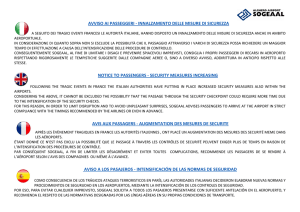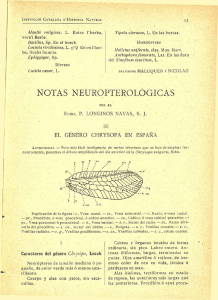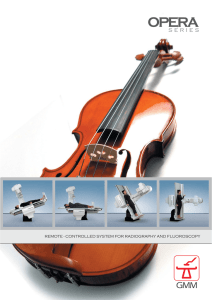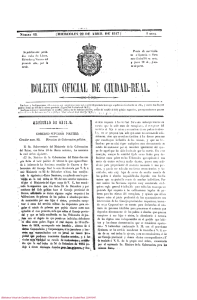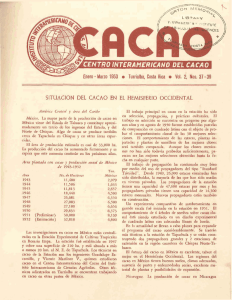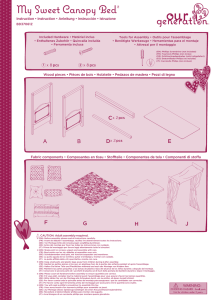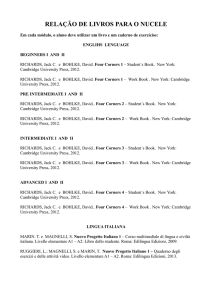38102 manual V2
Anuncio
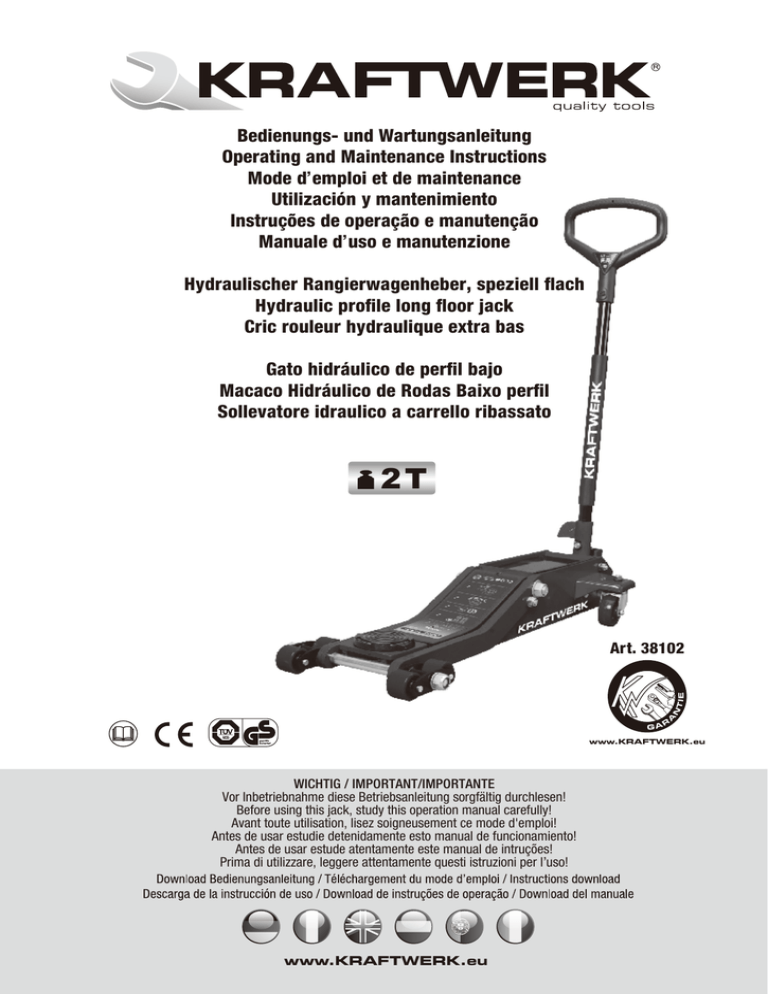
Bedienungs- und Wartungsanleitung Operating and Maintenance Instructions Mode dʼemploi et de maintenance Utilización y mantenimiento Instruções de operação e manutenção Manuale dʼuso e manutenzione Hydraulischer Rangierwagenheber, speziell flach Hydraulic profile long floor jack Cric rouleur hydraulique extra bas Gato hidráulico de perfil bajo Macaco Hidráulico de Rodas Baixo perfil Sollevatore idraulico a carrello ribassato 2T Art. 38102 www.KRAFTWERK.eu WICHTIG / IMPORTANT/IMPORTANTE Vor Inbetriebnahme diese Betriebsanleitung sorgfältig durchlesen! Before using this jack, study this operation manual carefully! Avant toute utilisation, lisez soigneusement ce mode d'emploi! Antes de usar estudie detenidamente esto manual de funcionamiento! Antes de usar estude atentamente este manual de intruções! Prima di utilizzare, leggere attentamente questi istruzioni per lʼuso! www.KRAFTWERK.eu DEUTSCH SPEZIFIKATIONEN 24x = 434 mm 2T m m 42 kg 36 min. 76 mm 136 10 max. 510 mm 76 -5 mm 5 m m m 6m 100 ARBEITEN Der Eigentümer resp. Bediener ist für die Wartung verantwortlich, er muss alle Etiketten und Warnschilder erhalten und das Gerät in gutem Arbeitszustand halten. Wenn der Eigentümer und/oder Bediener nicht fließend Deutsch sprechen, müssen Käufer/Eigentümer oder Inhaber ihm die Produktund Sicherheitsanweisungen vorlesen und mit ihm in seiner Muttersprache besprechen, der Bediener muss den gesamten Inhalt verstehen. Die Sicherheitsinformationen sind vor Gebrauch zu lesen und zu verstehen. Den Wagenheber vor Gebrauch gemäß der Bedienungsanleitung überprüfen. Der Eigentümer und/oder Bediener müssen alle WARNUNGEN auf dem Produktetikett, die Betriebsund Wartungsanleitungen und die Bedienungsanleitung dieses Geräts genau durchlesen. Diese Produktanleitungen sind zum späteren Nachschlagen aufzubewahren. Das Fahrzeug anheben: 1. Wagenheber und Fahrzeug müssen auf einer geraden Fläche stehen. 2. Immer die Handbremse anziehen und die Räder blockieren. 3. In der Bedienungsanleitung des Fahrzeugs die Anlegestellen des Wagenhebers nachsehen und den Wagenheber unter dem vorgeschriebenen Hebepunkt in Stellung bringen. 4. Das Löseventil im Uhrzeigersinn auf die geschlossene Position drehen. NICHT ÜBERDREHEN! 5. Um das Fahrzeug auf die gewünschte Höhe anzuheben, die Griffstange in den Stutzen stecken und auf- und abpumpen. 6. Die Hebestützen unter das Fahrzeug an den vom Fahrzeughersteller empfohlenen Stellen setzen. Ohne die Hebestützen nicht unter das Fahrzeug gehen. Wagenheber sind nicht entwickelt, um schwere Lasten für lange Zeit zu halten. 7. Das Löseventil LANGSAM entgegen dem Uhrzeigersinn drehen, um die Last auf die Hebestützen abzusenken. Das Fahrzeug senken: 1. Das Löseventil im Uhrzeigersinn auf die geschlossene Position drehen. 2. Mit der Griffstange pumpen, um das Fahrzeug von den Hebestützen zu heben. 3. Die Hebestützen entfernen. Beim Absenken nicht unter das Fahrzeug gehen und es auch keiner Zweitperson erlauben. 4. Das Löseventil LANGSAM entgegen dem Uhrzeigersinn drehen, um das Fahrzeug auf den Boden abzusenken. PRÜFUNG Das Gerät wird gemäß den Produktanweisungen gewartet. Es dürfen keine Änderungen an diesem Gerät vorgenommen werden. 1. Vor Gebrauch den Wagenheber visuell auf anormale Bedingungen wie gerissene Schweißungen, Schäden, Verbiegung, Verschleiß, lose oder fehlende Teile oder Verlust von Hydrauliköl prüfen. 2. Die Prüfungen sind gemäß dieser Anleitung durchzuführen. 3. Das Gerät ist sofort zu prüfen, wenn der Wagenheber einer anormalen Last oder Stoß unterworfen war. Es wird empfohlen, diese Prüfung vor Gebrauch von einem zugelassenen Kundendienstvertreter durchführen zu lassen. 2 WARTUNG Es wird eine monatliche Wartung empfohlen. Die Schmierung an Wagenhebern ist äußerst wichtig, da sie schwere Lasten tragen. Jede Einschränkung wegen Schmutz, Rost, usw. kann eine langsame Bewegung oder extrem schnelle Rucks verursachen, wodurch Innenteile beschädigt werden. Den Wagenheber nach den folgenden Verfahren gut schmieren: 1. Den Kolben, Verbindungen, Sattel und Pumpvorrichtung mit Leichtöl schmieren. Radlager und Achsen schmieren. 2. Auf gerissene Schweißungen, Verbiegung, lose, fehlende Teile oder Verlust von Hydrauliköl hin untersuchen. 3. Wenn der Wagenheber anormaler Belastung oder Stoß unterworfen ist, ihn außer Betrieb nehmen und ihn vor Gebrauch von einem Kundendienstvertreter prüfen lassen. 4. Alle Flächen reinigen und alle Etiketten und Warnungen erhalten. 5. Den Ölpegel des Kolbens überprüfen. 6. Alle drei Monate auf Anzeichen von Rost oder Korrosion hin überprüfen. Bei Bedarf reinigen und mit einem Öltuch abwischen. Wenn der Wagenheber nicht in Gebrauch ist, den Sattel und Kolben immer ganz abgesenkt lassen. Ihren Wagenheber immer in ganz abgesenkter Position lagern. Dadurch werden kritische Bereiche besser vor übermäßiger Korrosion geschützt. Keine Brems- oder Antriebsflüssigkeiten oder normale Motoröle verwenden, da sie die Dichtungen beschädigen können. Immer das für den Wagenheber vorgesehene Hydrauliköl kaufen und benutzen! ÖLPEGEL ÜBERPRÜFEN 1. Das Löseventil entgegen dem Uhrzeigersinn drehen, damit der Kolben ganz eingezogen werden kann. Sie müssen eventuell Kraft auf den Sattel anwenden, um ihn zu senken. 2. Mit dem Wagenheber in ebener Position, den Ölfüllstutzen abnehmen. Das Öl sollte bis zur Unterseite der Füllöffnung gefüllt sein. Falls dem nicht so ist, auffüllen. Nicht überfüllen. Immer neues, sauberes Hydrauliköl Typ HL oder HM mit kinematischer Viskosität ISO-Grad 30 cST bei 40° oder Engler Viskosität von 3 bei 50° für den Wagenheber verwenden. 3. Den Füllstutzen wieder einsetzen. 4. Den Betrieb des Wagenhebers überprüfen. 5. Gegebenenfalls Luft aus dem System ablassen. STÖRUNGSBESEITIGUNG Luft aus dem System ablassen 1. Das Löseventil entgegen dem Uhrzeigersinn einmal voll herumdrehen, um es zu öffnen. 2. Die Griffstange einige Male über den vollen Hub pumpen. 3. Das Ventil im Uhrzeigersinn drehen, um es zu schließen. Problem Der Wagenheber hebt nicht auf die volle Höhe an. Der Wagenheber hält die Last nicht konstant. Der Hebearm lässt sich nicht senken Der Wagenheber fühlt sich beim Heben schwammig an Mögliche Ursache Ölpegel niedrig Löseventil schliesst nicht Hydrauliköl verschmutzt Pumpenventile undicht Zylinderkolben klemmt Zylinderkolben klemmt Teile verschlissen Beschädigung im Innern Rückholfeder gebrochen oder ausgehakt Hebearmverbindung verbogen oder klemmt Luft im Hydraulikventil Aktion Ölpegel überprüfen, ggf. Hydrauliköl nachfüllen Kundendienst anrufen Kundendienst anrufen Luft aus dem System ablassen (siehe oben) 3 REPARATUREN Wenn ein hydraulischer Wagenheber irgendwie beschädigt, abgenutzt ist oder anormal funktioniert oder einer anormalen Last unterworfen ist, ist er BIS ZUR ERFOLGTEN REPARATUR AUSSER BETRIEB ZU NEHMEN. Eigentümer und/oder Bediener müssen wissen, dass für die Reparatur des Wagenhebers Fachwissen und spezielle Einrichtungen nötig sind. Nur vom Werk zugelassene Teile, Schilder und Etiketten sind auf diesem Wagenheber zu benutzen. Kontaktieren Sie die Kundendienstabteilung. WARNUNG! • ALLE WARNUNGEN UND BEDIENUNGSANLEITUNGEN VOR GEBRAUCH GENAU LESEN UND VERSTEHEN! • DIESEN WAGENHEBER NICHT ÜBER DIE NENNLEISTUNG HINAUS ÜBERLASTEN • DIESER WAGENHEBER IST NUR AUF HARTEN, EBENEN FLÄCHEN EINZUSETZEN, DIE DIE LAST HALTEN KÖNNEN. DIE VERWENDUNG AUF NICHT HARTEN, EBENEN FLÄCHEN KANN ZU INSTABILITÄT DES WAGENHEBERS UND MÖGLICHEM KIPPEN DER LAST FÜHREN. • DIES IST NUR EIN HEBEGERÄT. SOFORT NACH DEM HEBEN DAS FAHRZEUG MIT GEPRÜFTEN HEBESTÜTZEN ODER UNTERSTELLBÖCKEN ABSTÜTZEN. • NICHT UNTER DAS FAHRZEUG GEHEN UND ES NIEMAND ANDEREM ERLAUBEN, BIS ES VON DEN HEBESTÜTZEN GETRAGEN WIRD. • DAS FAHRZEUG NICHT BEWEGEN ODER RANGIEREN, SOLANGE ES AUF DEN STÜTZEN AUFLIEGT. • NUR AN DEN BEREICHEN ANHEBEN, DIE VOM FAHRZEUGHERSTELLER ANGEGEBEN SIND. • DIE LAST VOR DEM ANHEBEN AUF DEN SATTEL ZENTRIEREN. • ES DÜRFEN KEINE ÄNDERUNGEN AM WAGENHEBER VORGENOMMEN WERDEN. • DIE NICHTEINHALTUNG DIESER WARNUNGEN KANN ZU PERSONEN- UND SACHSCHÄDEN FÜHREN. • DAS ÜBERDRUCKVENTIL WURDE VOM WERK EINGESTELLT UND VERSIEGELT. NIEMALS DAS ÜBERDRUCKVENTIL VERSTELLEN, ANSONSTEN GILT VERLUST DES GARANTIEANSPRUCHS. KONTAKTIEREN SIE DEN KUNDENDIENST UM DAS ÜBERDRUCKVENTIL NEU AUF 2 TONNEN LIMITIERT EINSTELLEN ZU LASSEN. Wegen der möglichen Gefahren in Verbindung mit dem falschen Gebrauch von Geräten dieser Art, dürfen ohne schriftliche Genehmigung von KRAFTWERK als Inverkehrbringer keinerlei Änderungen am Produkt vorgenommen werden. MONTAGE DES WAGENHEBERS Prüfen Sie bitte, ob Sie alle folgenden Teile erhalten haben: - Wagenheber - Pumpgriffstange 4 ENGLISH SPECIFICATIONS 24x = 434 mm 76 -5 2T m m 42 kg 36 min. 76 mm 136 10 max. 510 mm mm 5 m m m 6m 100 OPERATIONS The owner and/or operator is responsible for providing maintenance, maintaining all decals or warning labels and while in use, maintaining the unit in good work order. If the owner and/or operator is not fluent in English, the product warnings and instructions shall be read and discussed with the operator in the operatorʼs native language by the purchaser/owner or his designee. The jack shall be inspected per the instruction manual prior to use. It is the owner and/or operators responsibility to study all WARNINGS on the product label and the operating and maintenance instructions prior to operation of this unit. The owner/operator shall retain the product instructions for future reference. Raising the vehicle: 1. Make sure the jack and vehicle are on a hand level surface. 2. Always set the vehicle parking brake and block the wheels. 3. Consult the vehicle ownerʼs manual to ascertain the location of jack points and position the jack beneath the prescribed lift point. 4. Turn the release valve clockwise to the closed position. DO NOT OVERTIGHTEN! 5. To raise the vehicle to the required height, place the handle into the socket and pump up and down. 6. Place jack stands beneath the vehicle at locations recommended by the vehicle manufacturer. Do not get under the vehicle without jack stands. Jacks are not designed to maintain heavy loads for long periods of time. 7. Turn release valve SLOWLY counterclockwise to lower the vehicle onto the ground. Lowering the vehicle: 1. Turn the release valve clockwise to the closed position. 2. Pump the handle to lift vehicle off of jack stands. 3. Remove the jack stands. Do not get under or let anyone else under the vehicle while lowering. 4. Turn the release valve SLOWLY counterclockwise to lower the vehicle onto the ground. INSPECTION The product shall be maintained in accordance with the product instructions. No alterations shall be made to this product. 1. Before use, a visual inspection of the jack should be made for abnormal conditions such as cracked welds, damage, bent, worn, loose or missing parts or hydraulic leaks. 2. Inspections shall be performed in accordance with this manual. 3. The product shall be inspected immediately if the jack is believed to have been subject to an abnormal load or shock. It is recommended that this inspection is made by an authroized customer service representative prior to use. 5 MAINTENANCE Monthly maintenance is recommended. Lubrication is very important for jacks as they support heavy loads. Any restriction due to dirt, rust etc. can cause either slow movement or cause extremely rapid jerks, damaging the internal components. The following steps are designed to keep the jack well lubricated: 1. Lubricate the ram, linkages, saddle and pump mechanism with light oil. Grease wheels bearings and axles. 2. Visually inspect for cracked welds, bent, loose, missing parts or hydraulic oil leaks. 3. If jack is subjected to abnormal load or shock, remove from service and have it examined by a customer service representative prior to use. 4. Clean all surfaces and maintain all labels and warnings. 5. Check and maintain the ram oil level. 6. Check ram every 3 months for any sign of rust or corrosion. Clean as needed and wipe with an oil cloth. Always store your jack in the fully lowered position. This will help to protect critical areas from excessive corrosion. Do not use brake or transmission fluids or regular motor oil as they can damage the seals. Always purchase and use products labeled Hydraulic Jack Oil. CHECK OIL LEVEL 1. Turn release valve counterclockwise to allow ram to fully retract. It may be necessay to apply force to the saddle for lowering. 2. With the jack in the level position, remove the oil fill plug. The oil should be level with the bottom of fill hole. If not, top off. Do not overfill. Always fill with new, clean hydraulic jack oil type HL or HM with an ISO-grade of kinematic viscosity of 30 cST at 40°, or an Engler viscosity of 3 at 50°. 3. Replace fill plug. 4. Check jack operation 5. Purge air from system if required. TROUBLE SHOOTING System air purge: 1. Turn release valve counterclockwise one full turn to open. 2. Pump handle several full strokes. 3. Turn release valve clockwise to close valve. Problem Jack will not lift to full height Jack will not hold load constantly Lift arm will not lower Jack feels spongy when lifting Possible cause Low oil level Release valve is not closing Hydraulic jack oil contaminated Pump valves not sealing Cylinder ram binding Cylinder ram binding Parts worn Internal damage Broken return spring or unhooked Lift arm linkage bent or binding Air in hydraulic system Action Check oil level Call customer service Call customer service System air purge procedure (see above) 6 REPARATIONS Any hydraulic jack found to be damaged in any way, is found to be worn or operates abnormally, believed to have subjected to an abnormal load, shall be REMOVED FROM SERVICE UNTIL FULL REPAIRED. Owners and/or operators should be aware that repair of the equipment requires specialized knowledge and facilities. Only factory authorized parts, labels and decals shall be used on this equipment. Contact customer service department. WARNING! • READ, STUDY AND UNDERSTAND ALL WARNINGS AND OPERATION INSTRUCTIONS PRIOR TO USE. • DO NOT OVERLOAD THIS JACK BEYOND THE RATED CAPACITY. • THIS JACK IS DESIGNED FOR USE ONLY ON HARD LEVEL SURFACES CAPABLE OF SUSTAINING THE LOAD. USE ON OTHER THAN HARD LEVEL SURFACES CAN RESULT IN JACK INSTABILITY AND POSSIBLE LOSS OF LOAD. • THIS IS A LIFTING DEVICE ONLY. IMMEDIATELY AFTER LIFTING, SUPPORT THE VEHICLE WITH JACK STANDS. • DO NOT GET UNDER OR ALLOW ANYONE UNDER THE VEHICLE UNTIL IT HAS BEEN SUPPORTED BY JACK STANDS. • DO NOT MOVE OR DOLLY THE VEHICLE WHILE ON THE JACK. • LIFT ONLY ON AREAS OF THE VEHICLE AS SPECIFIED BY THE VEHICLE MANUFACTURER • CENTER LOAD ON SADDLE PRIOR TO LIFTING. • NO ALTERATIONS TO THE JACK SHALL BE MADE. • FAILURE OR HEED THESE WARNINGS MAY RESULT IN PERSONAL INJURY AND PROPERTY DAMAGE. • THE PRESSURE VALVE HAS BEEN SEALED BY THE FACTORY. NEVER ADJUST THE PRESSURE VALVE BY YOUR SELF OTHERWISE YOU LOOSE YOUR GUARANTEE-RIGHT. CONTACT CUSTOMER SERVICE DEPARTMENT TO LET SEAL THE PRESSURE VALVE BY AUTHORIZED PEOPLE AT 2 TONS LIMITED ONLY. Because of potential hazards associated with the misuses of equipment of this type, no alterations shall be made to the product without written authorization of KRAFTWERK as manufacturer and supplier. ASSEMBLING OF JACK Please check that you have got all the parts listed below: - Jack - Pumping handle 7 FRANCAIS CARACTÉRISTIQUES 24x = 434 mm 76 -5 2T 136 10 max. 510 mm m m 36 min. 76 mm 42 kg mm 5 m m m 6m 100 TRAVAIL Le propriétaire resp. utilisateur est responsable de la maintenance. Il doit recevoir toutes les notices et maintenir lʼappareil en bon état. Si le propriétaire ou/et utilisateur ne parle pas le français couramment, lʼacquéreur doit lui lire le mode dʼemploi et lʼinstruction de sécurité dans sa langue maternelle, lʼutilisateur doit avoir connaissance ce tout le contenu. Il est du rôle de lʼutilisateur de vérifier toutes les mises en garde, les modes opératoires et les instructions de maintenance contenus dans le manuel dʼutilisation et sur les notices avant dʼutiliser le produit. Lʼacquéreur et/ou lʼutilisateur doivent garder les instructions de lʼoutil en cas dʼutilisation future. Pour élever le véhicule: 1. Le cric est le véhicule doivent se trouver uniquement sur un plan parfaitement horizontal. 2. Positionner les roues droites et actionner le frein à mains. 3. Toujours lever sur les points de levage prescrits par le fabricant. 4. Positionner les valves de sorties en les tournants dans le sens des aiguilles dʼune montre sur la position fermé. NE SERRER PAS PLUS! 5. Pour lever une véhicule à la hauteur voulue, activer le levier du haut en bas. 6. Placer le cric sous le véhicule à la position indiquée par le fabricant. Utiliser impérativement des chandelles pour supporter la charge. Ne jamais se placer dans un véhicule levé ou en dessus ou en dessous dʼune charge levée et exclusivement supportée par le cric. Les crics ne sont pas prévus pour maintenir de lourdes charges sur des longues périodes. 7. Tourner les valves de sortie LENTEMENT dans le sens contraire des aiguilles dʼune montre pour abaisser la charge sur les chandelles. Pour rabaisser le véhicule: 1. Positionner les valves de sortie en les tournants dans les sens des aiguilles dʼune montre sur la position fermé. 2. Actionner la poignée en pompant pour sortir le véhicule des chandelles. 3. Enlever les chandelles. Ne pas se mettre ou laisser quelquʼun dʼautre se mettre sous le véhicule lors de lʼabaissement de celui-ci. 4. Tourner les valves de sorties LENTEMENT dans le sens contraire des aiguilles dʼune montre pour poser le véhicule au sol. VERIFICATIONS La maintenance de lʼoutil doit se faire suivant les instructions. Aucune modification ne doit être faite à ce produit. 1. Avant utilisation, il est recommandé de regarder le cric pour détecter des éléments anormaux tels que des traces de soude, des éléments abimés, plies, perdus ou manquants ou des pertes de niveau hydrauliques. 2. Les vérifications doivent se faire conformément au manuel. 3. Lʼoutil doit être vérifié immédiatement si le cric est suspecté dʼavoir subit des chocs ou des charges anormales. Il est conseillé de faire appel à un service reconnu et compétent pour toute inspection. 8 ENTRETIEN Une maintenance mensuelle est recommandée. Toutes pollutions telles que poussière ou rouille peuvent provoquer une accéleration ou un ralentissement du cric et de ce fait endommager les élémens internes. Les étapes ci-dessous sont destinées à garder un cric lubrifié: 1. Enduire le piston, les liens, la selle et le mécanisme de la pompe avec une huile légère. Graisser les supports et les axes de roues. 2. Rechercher des traces de soude, des éléments abîmés, plies, perdus ou manquants ou des pertes de liquide hydraulique. 3. Si le cric est suspecté dʼavoir subit des chocs ou des charges anormales, le mettre hors-service et le faire vérifier par un service reconnu et compétent. 4. Nettoyer toutes les surfaces, les étiquettes et les mises en garde. 5. Vérifier et maintenir le niveau dʼhuile du piston. 6. Vérifier tous les mois le piston pour voir sʼil nʼy a pas de traces de corrosion et/ou de rouille. Nettoyer autant que nécessaire et essuyer avec un chiffon pour huile. En cas de non utilisation du cric, le piston et le bras de levage doivent être en position basse. Stocker toujours le cric en position basse. Cela aidera à protéger les parties délicates de la corrosion. Ne pas utiliser de fluide de frein, de fluides de transmission ni dʼhuile pour le moteur qui pourraient abîmer les joints. Acheter et utiliser uniquement des produits dʼentretien avec la mention «huile pour système hydraulique» VERIFICATION DU NIVEAU DʼHUILE 1. Tourner les valves de sorties dans les sens contraire des aiguilles dʼune montre pour permettre au piston de se rétracter complétement. Il est quelquefois recommandé dʼexcercer une pression sur la selle pour quʼelle sʼabaisse. 2. Lorsque le cric est droit, piston en position basse, enlever le bouchon. Le réservoir doit être rempli exactement jusqu’à l’ouverture. Si ce n’est pas le cas, remettre l’huile. Ne jamais dépasser le niveau maximum. Utiliser uniquement de l’huile propre et neuve spéciale pour outils hydrauliques type HL OU HM avec un degrée ISO de viscosité kinématique de 30 cST à 40°, ou une viscosité Engler de 3 à 50°. 3. Replacer le bouchon 4. Vérifier le fonctionnement du cric. 5. Purger le système dʼassainissement de lʼair du système tant que nécessaire. EN CAS DE PROBLÈMES Du système dʼassainissement de lʼair: 1. Tournes les valves de sorties dʼun tour complet dans le sens contraire des aiguilles dʼune montre pour ouvrir. 2. Actionner plusieurs fois la poignée de la pompe. 3. Tourner les valves de sorties dans le sens des aiguilles dʼune montre pour refermer. Problèmes Le cric ne soulève pas sa charge à la hauteur maximale Le cric ne retient pas son chargement Le bras dʼélévation ne descend pas Le bras du cric semble dʼêtre instable lors de la portée Origines possibles Niveau dʼhuile trop faible Solutions Vérifier le niveau dʼhuile Vanne de sortie ouverte Huile pour système hydraulique périmée SAV Problème de joints des vannes de la pompe Blocage du piston cylindrique Blocage du piston cylindrique Parties tordus Dommages internes SAV Piston de retour cassé ou décroché Blocage des liens du bras dʼélévation Purger le système Air dans le système hydraulique dʼassainissement de lʼair 9 SAV Tout cric hydraulique abîmé, fonctionnant anormalement, ou ayant été soumis à des charges anormalement lourdes, DOIT ÊTRE MIS HORS SERVICE JUSQU'A RÉPARATION. Lʼutilisateur doit savoir que toute réparation nécessite des connaissances spécialisées et des équipements adaptés. Seuls des fabricants de pièces , des marques ou de signalisations autorisés peuvent assurer la réparation du produit. Se renseigner auprès du SAV le plus proche. Utiliser seulement les étiquettes de sécurité exigées par le fabricant. AVERTISSEMENT! • LʼUTILISATEUR DOIT AVOIR PRIS CONNAISSANCE ET COMPRIS LES INSTRUCTIONS ET LES PRÉCAUTIONS AVANT UTILISATION! • NE PAS EXCEDER LA CHARGE MAXIMALE. • UTILISER LE CRIC UNIQUEMENT SUR UN SOL STABLE QUI PEUT SUPPORTER LA CHARGE. LʼUTILISATION DU CRIC SUR TOUTE AUTRE SURFACE NON ADAPTÉE ENTRAÎNERAIT LʼINSTABILITÉ DU CRIC ET LA POSSIBLE PERTE DU CHARGEMENT. • IL SʼAGIT DʼUNE PROCEDURE DE MONTAGE UNIQUEMENT. CI TOT APRES LE MONTAGE, STABILISER LE VEHICULE AVEC DES CHANDELLES. • SʼASSURER QUE PERSONNE NʼAILLE SOUS LE VEHICULE TANT QUʼIL EST SUR ÉLÉVÉ PAR LES CHANDELLES. • NE PAS BOUGER LE VEHICULE LORSQUʼIL SE TROUVE SUR LE CRIC. • UTILISER LE CRIC SUR LES POINTS SPECIFIE PAR LE FABRIQUANT DU VEHICULE. • LʼOBJET DOIT ÊTRE STABLE ET LE CRIC SE TROUVER EN POSITION CENTRALE ENDESSOUS DE LʼOBJET. • AUCUN CHANGEMENT DE PLACE DU CRIC NE DOIT ETRE FAIT. • LA NON-OBSERVATION DE CES PRECAUTIONS PEUT ENTRAINER LʼENDOMMAGEMENT DU CRIC ET DE LʼOBJET ET DES BLESSURES CORPORELLES. • LA SOUPAPE DE SURPRESSION EST AJUSTEE ET SCELLEE PAR LʼUSINE. NE JAMAIS TENTER DʼINTERVENIR SUR LA SOUPAPE DE SURPRESSION CE QUI CONDUIRAIT A UN REFUS DE GARANTIE. CONTACTER LE SAV POUR LAISSER RAJUSTER LA SOUPAPE DE SURPRESSION A LA LIMITE DE 2 TONNES. Prendre soin que les signes de précautions sur le cric restent intacts. Si elles doivent être remplacées, prendre dʼabord contact avec KRAFTWERK. ASSEMBLAGE DU CRIC Vérifier dʼêtre en possession de toutes les parties ci-dessous: - Cric rouleur - Poignée de pompage 10 ESPAÑOL CARACTERISTICAS 24x = 434 mm 2T 136 10 max. 510 mm 76 -5 m m 36 min. 76 mm 42 kg mm 5 m m m 6m 100 OPERACIONES El propietario, utilizador o responsable de mantenimiento deben atender todos los protocolos y mantener el aparato en buen estado. Si el propietario u utilizador no hablan fluidamente el castellano, el comprador o propietario debera indicar el modo de empleo y las instrucciones de seguridad, instruyendo en su lengua materna al operador/utilizador, que debera entender todo lo explicado. El utilizador debe verificar todos los posibles peligros, las formas de operar y las instrucciones de mantenimiento contenidas en el manual de empleo y en los protocolos, antes de utilizar el producto. El operador / utilizador deben guardar las instrucciones del util, para caso de utilización futura. Para elevar el vehículo: 1. El gato y el vehículo deben estar sobre una base horizontal. 2. Mantener el freno de mano echado con las ruedas bloqueadas. 3. Utilizar siempre en los puntos de elevación indicados por el fabricante. 4. Girar las válvulas de salida en el sentido de las agujas del reloj hasta la posición de cerrada. ¡NO TENSAR DEMASIADO!! 5. Para elevar el vehículo a la altura requerida, bombear con el mango de arriba abajo. 6. Colocar soportes debajo del vehículo en el sitio recomendado por el fabricante del mismo. Utilizar soportes para soportar la carga. No ponerse jamás debajo de un vehículo levantado o debajo de una carga elevada y soportada exclusivamente por el gato. Los gatos no están previstos para soportar cargas pesadas durante largos periodos 7. Girar las válvulas de salida lentamente en el sentido contrario de las agujas de reloj para bajar la carga sobre los soportes o en el suelo. Para bajar el vehículo: 1. Girar las válvulas de salida en el sentido de las agujas del reloj hasta la posición cerrado. 2. Accionar la empuñadura bombeando para sacar el vehículo de los soportes. 3. Quitar los soportes. No ponerse debajo del vehículo mientras baja. 4. Girar las válvulas de salida lentamente en el sentido contrario de las agujas del reloj para bajar el vehículo en el suelo. VERIFICACIONES El mantenimiento del util debe hacerse siguiendo las instrucciones. No debe hacerse modificación alguna en el producto. 4. Antes del uso se recomienda revisar el gato para detectar posibles anomalias como roturas abolladuras, falta de piezas o perdidas de liquido hidraulico, etc. 5. Las verificaciones deben hacerse conforme al manual. 6. El util debe ser inspeccionado inmediatamente si existe la sospecha de que haya sufrido golpes o cargas excesivas. La inspeccion se debera realizar en un servicio tecnico reconocido y autorizado. 11 MANTENIMIENTO Es recomendable una verificación mensual. El polvo y la suciedad pueden provocar la aceleración o relantización de los movimientos del gato, dañando sus componentes internos. Se debe mantener el gato bien lubrificado en todo momento: 1. Lubricar el espolón , los engranajes, rodillos y el mecanismo de la bomba con un aceite ligero. Engrasar los ejes y rodillos de las ruedas. 2. Verificar las posibles roturas, abolladuras , faltas de piezas o perdida de nivel hidraulico. 3. Si se sospecha que el gato ha podido sufrir golpes o cargas excesivas, se debe realizar verificación por un servicio reconocido y autorizado. 4. Limpiar todas las superficies y respetar las recomendaciones e instrucciones. 5. Verificar y mantener el nivel de aceite. 6. Comprobar cada 3 meses para ver si hay algun señal de corrosión o oxidación. Limpiar tantas veces como sea necesario con un trapo impregnado en aceite. Guardar siempre el gato en posición bajada. Esto ayudara a proteger las partes delicadas de la corrosión. No utilizar liquido de frenos, de transmisiones ni aceite para motor que puedan agrietar las juntas.Utilizar siempre aceite para sistemas hidraulicos! CONTROL DE NIVEL DE ACEITE 1. Girar las válvulas de salida en sentido contrario a las agujas de reloj para permitir que el espolón baje completamente. Se recomienda realizar una pequeña presión sobre el soporte para bajar el espolón. 2. Con el gato en posición nivelada, el espolón en su posición bajada, quitar el tapón. El recipiente se debe llenar exactamente hasta la apertura. En caso de no ser así rellenar de aceite. Nunca sobrepasar el nivel máximo. Utilizar siempre aceite hidráulico nuevo para gatos tipo HL ó HM con un grado de viscosidad cinemática de 30 cST por 40°, o viscosidad Engler de 3 por 50°. 3. Poner el tapón. 4. Comprobar el funcionamiento del gato. 5. Purgar el sistema para sacar el aire tanto como sea necesario. AVERÍAS Purgar el aire: 1. Girar las válvulas de salida, una vuelta completa en el sentido contrario de las agujas del reloj para abrir. 2. Bombear varias veces la empuñadura. 3. Girar las válvulas de salida en el sentido de las agujas del reloj para volver a cerrar. Avería El gato no sube a altura máxima El gato no retiene la carga El brazo elevador no bajo El brazo del gato parece mas blanda en la subida Causas posibles Nivel aceite bajo Válvula salida sin cerrar Aceite hidraulico sucio Problemas en las juntas de las válvulas de la bomba Bloque del espolón cilindrico Blocaje espolón cilindrico Partes dobladas Daños internos Pistón de retorno roto Aire en el sistema hidraulico Soluciones Comprobar nivel aceite Llamar servicio tecnico Llamar servicio tecnico Purgar sistema aire 12 REPARACIONES Todo gato dañado, con mal funcionamiento, o que haya sido sometido a cargas muy elevadas, DEBE SER VERIFICADO POR SERVICIO AUTORIZADO PARA SU REPARACIÓN. El operador debe saber que las reparaciones necesitan de conocimientos especializados y de los utiles correspondientes. Solo los fabricantes de piezas, marcas o autorizados pueden garantizar la reparación del producto. Llevar al servicio autorizado tecnico mas próximo. Utilizar unicamente los componentes y protocolos de seguridad determinados por el fabricante. ¡ATENCION! • EL OPERADOR DEBE CONOCER Y COMPRENDER LAS INSTRUCCIONES Y PRECAUCIONES DE UTILIZACIÓN! • NO SOBREPASAR LA CARGA MÁXIMA! • UTILIZAR EL GATO SOBRE SUELO REGULAR - ESTABLE PARA PODER SOPORTAR LA CARGA. LA UTILIZACIÓN DEL GATO SOBRE UNA SUPERFICIE IRREGULAR-INESTABLE PROVOCARÁ LA INESTABILIDAD DEL GATO Y LA POSIBLE CAÍDA DE LA CARGA. • ESTE UTIL ES ÚNICAMENTE UN ELEVADOR. DESPUÉS DE LA ELEVACIÓN, ESTABILICESE EL VEHÍCULO CON SOPORTES. • ASEGURESE DE QUE NO HAY NADIE BAJO EL VEHÍCULO HASTA QUE NO SE ESTAILICE SOBRE LOS SOPORTES. • NO MOVER EL VEHÍCULO MIENTRAS ESTÁ SOBRE EL GATO. • UTILIZAR EL GATO EN LOS PUNTOS INDICADOS POR EL FABRICANTE DEL VEHÍCULO. • CENTRAR LA CARGA EN EL GATO PARA QUE ESTE ESTABILIZADA LA SUBIDA. • NO SE DEBE REALIZAR MODIFICACION O ALTERACIÓN ALGUNA EN EL GATO. • EL INCUMPLIMIENTO DE LAS INDICACIONES PUEDE CONLLEVAR A ROTURA O MAL FUNCIONAMIENTO DEL GATO Y PROVOCAR LESIONES CORPORALES. • LA VÁLVULA DE PRESION ESTÁ REGULADA POR EL FABRICANTE. NO TRATAR DE REGULARLA PARA NO PERDER LA GARANTÍA. LLEVAR AL SERVICIO TECNICO PARA REGULAR DE NUEVO LA VÁLVULA DE PRESIÓN CON UN LIMITE DE 2 T. Procurar que los componentes de seguridad del gato se conservan en buen estado. En caso de tener que reemplazar alguno, se debe contactar y contar con la aprobación del importador. MONTAJE DEL GATO Comprobar que se tienen las partes indicadas a continuación. - Gato - Barra de bombeo. 13 PORTUGUES ESPECIFICAÇÕES 24x = 434 mm 76 -5 2T 136 10 max. 510 mm m m 36 min. 76 mm 42 kg mm 5 m m m 6m 100 OPERAÇÃO O proprietário e/ou operador são responsáveis pela manutenção, e pelo bom estado do equipamento. Se o proprietário e/ou operador não falam o português fluentemente, o comprador ou o proprietário deverão indicar as operações e as instruções de segurança, instruindo na sua língua materna ao operador/utilizador, que deverá entender todo o explicado. O utilizador deve verificar todos os possíveis perigos, as formas de operar e as instruções de manutenção existentes no manual, antes de utilizar o produto. O operador/utilizador deve guardar este manual e instruções deste produto, para utilizações futuras. Para elevar o veiculo: 1. O macaco e o veículo devem estar sobre uma base direita. 2. Manter o travão de mão accionado e bloquear as rodas. 3. Consulte o manual do veículo de forma a utilizar sempre os pontos indicados para o macaco indicados pelo fabricante. 4. Rodar as válvulas de saída no sentido dos ponteiros do relógio até posição fechado. NÃO APERTAR DEMASIADO! 1. Para elevar o veiculo para posição desejada, colocar o cabo e bombear para cima e para baixo. 2. Colocar suportes debaixo do veículo no sítio recomendado pelo fabricante do mesmo. Utilizar suportes para suportar a carga. Nunca se coloque debaixo do veículo levantado ou debaixo de uma carga suportados exclusivamente pelo macaco. Os macacos não estão concebidos para suportar cargas pesadas durante longos períodos de tempo. 3. Rodar as válvulas de saída lentamente no sentido contrário ao dos ponteiros do relógio para baixar a carga sobre os suportes ou no chão. Para baixar o veiculo: 5. Rodar as válvulas de saída no sentido dos ponteiros do relógio até posição fechado. 6. Bombear o cabo para levantar o veículo dos suportes. 7. Tirar os suportes. Não se coloque debaixo do veículo enquanto baixa. 8. Rodar as válvulas de saída lentamente no sentido contrário ao dos ponteiros do relógio para baixar a carga sobre os suportes ou no chão. VERIFICAÇÕES A manutenção do produto deve ser feita seguindo as instruções. Não se deve fazer modificações no produto. 1. Antes de usar recomendamos uma verificação visual ao macaco em busca de anomalias como fissuras na soldadura, falta de peças, roturas, perdas de liquido hidraulico, etc. 2. As verificações devem ser feitas de acordo com o manual. 3. O produto deve ser inspeccionado imediatamente se existir a suspeita de pancadas fortes ou cargas excessivas. A inspecção deverá ser realizada num serviço técnico reconhecido e autorizado. 14 MANUTENÇÃO É recomendável uma verificação mensal. A lubrificação é muito importante pois os macacos suportam cargas muito pesadas. O pó e a sujidade podem provocar desde lentidão de movimentos como danos nos seus componentes internos. Os seguintes passos serão para uma manutenção do macaco sempre bem lubrificado: 1. Lubrificar tudo que seja sujeito a movimentos, engrenagens, rodízios e mecanismo da bomba com óleo. Com massa os eixos e rolamentos das rodas. 2. Verificar possíveis roturas, fissuras, falta de peças, ou perdas de óleo hidráulico. 3. O produto deve ser inspeccionado imediatamente se existir a suspeita de pancadas fortes ou cargas excessivas. A inspecção deverá ser realizada num serviço técnico reconhecido e autorizado. 4. Limpar todas as superficies e manter os autocolantes com avisos e precauções a vista. 5. Verificar e manter o nível de óleo hidráulico. 6. Verificar cada 3 meses se existe algum sinal de corrosão ou oxidação. Limpar quantas vezes o necessário com um trapo embebido em óleo. Guardar sempre o macaco em posição baixa. Esta acção irá ajudar a prevenir as peças delicadas da corrosão. Não utilizar liquido de travões ou transmissões nem óleo para motores que possa danificar os vedantes. Utilizar sempre óleo para sistemas hidráulicos. CONTROLO DE NIVEL OLEO 1. Rodar as válvulas de saída no sentido contrário ao dos ponteiros do relógio para permitir baixar totalmente. Recomendamos que se faça alguma pressão sobre o suporte para que baixe completamente. 2. Com o macaco em posição nivelada, e o hidraulico em baixo, retirar o bujão. O reservatório deve estar cheio exactamente até a abertura. Caso contrário encher. Nunca ultrapassar o nivel máximo. Utilizar sempre oleo novo e de qualidade para o macaco tipo HL ou HM com um viscosidade cinemática a 30 cST a 40°, o viscosidade Engler a 3 a 5 3. Colocar o bujão. 4. Verificar o funcionamento do macaco. 5. Purgar o ar do sistema se necessário. Purgar o ar: AVARIAS 1. Rodar as válvulas de saída, uma volta completa no sentido contrário dos ponteiros do relógio para abrir. 2. Bombear o punho varias vezes. 3. Rodar as válvulas de saída no sentido dos ponteiros do relógio para voltar a fechar. Problema Macaco não sobe até altura máxima Macaco não segura a carga constante Braço hidraulico não baixa Braço do macaco parece mais lento na subida Causa Possivel Nivel de oleo baixo Válvula saida sem fechar Oleo hidraulico sujo Bomba válvulas com fuga Cilindro bloqueado Cilindro bloqueado Peças dobradas Danos internos Mola de retorno partida ou solta Braço hidraulido com fuga ou preso Ar no sistema hidraulico Solução Verificar nivel de oleo Contactar serviço ao Cliente Contactar serviço ao Cliente Purgar o sistema (ver acima) 15 REPARAÇÕES Qualquer macaco com danos, com mal funcionamento ou que tenha sido submetido a cargas muito elevadas DEVERÁ SER VERIFICADO POR SERVIÇO AUTORIZADO PARA REPARAÇÃO. Proprietário ou operador devem saber que as reparações necessitam de conhecimentos especializados e peças correspondentes. Apenas os fabricantes ou técnicos especializados podem garantir a sua reparação e completa funcionalidade do equipamento. Utilizar apenas componentes e protocolos de segurança determinados pelo fabricante. ATENÇÃO! • LER, ESTUDAR E PERCEBER TODAS AS INTRUÇÕES E PRECAUÇÕES ANTES DE USAR. • NÃO ULTRAPASSAR O LIMITE DE CARGA INDICADO. • ESTE MACACO FOI DESENHADO PARA TRABALHAR EM SUPERFICIES PLANAS PARA PODER SUPORTAR A CARGA. A UTILIZAÇÃO DESTE EM SUPERFICIES IRREGULARES PODE CAUSAR A QUEDA DA CARGA. • ESTE MACACO É APENAS PARA ELEVAÇÃO. DEPOIS DA ELEVAÇÃO UTILIZAR SEMPRE OS SUPORTES PARA O VEICULO. • VERIFICAR SEMPRE QUE NÃO EXISTE NADA NEM NINGUEM DEBAIXO DO VEICULO,SEM COLOCAR PRIMEIRO OS SUPORTES. • NÃO MOVER O VEICULO ENQUANTO ESTIVER SOBRE O MACACO. • UTILIZAR O MACACO NOS PONTOS INDICADOS PELO FABRICANTE. • CENTRAR A CARGA NO MACACO PARA QUE ESTEJA ESTABILIZADA. • NÃO SE DEVE REALIZAR ALTERAÇÕES OU MODIFICAÇÕES NO MACACO. • O IMCUMPRIMENTO DAS INDICAÇÕES PODE LEVAR A DANOS OU MAL FUNCIONAMENTO DO MACACO E PROVOCAR LESÕES CORPORAIS. • A VÁLVULA DE PRESSÃO ESTÁ REGULADA PELO FABRICANTE. NÃO TENTE REGULAR A VÁLVULA OU PERDERÁ AOS DIREITOS DE GARANTIA. CONTACTE O SERVIÇO DE CLIENTE PARA EFECTUAR A MESMA REGULAÇÃO COM PESSOAL AUTORIZADO. Tentar preserver os componentes de segurança em bom estado. Em caso de ter que substituir algum deve contactar e contra com a aprovação do importador. MONTAGEM Comprovar se tem as peças indicadas abaixo: - Macaco - Punho de bombear 16 ITALIANO DATI TECNICI 24x = 434 mm 76 -5 2T 136 10 max. 510 mm m m 36 min. 76 mm 42 kg mm 5 m m m 6m 100 OPERAZIONI Il proprietario e/o chi é responsabile per la manutenzione, deve conservare tutte le etichette di manovra e avvertenze e deve mantenere l'apparecchio in buono stato. Se il proprietario e/o l'utilizzatore non parlano lʼitaliano correttamente, lʼacquirente/proprietario deve leggere le istruzioni dʼuso e le istruzioni di sicurezza ed è sua espressa responsabilità informare lʼutilizzatore nella sua lingua madre, facendone comprendere tutto il contenuto.È di responsabilità dell'utilizzatore, prima di utilizzare il prodotto, verificare tutti i serraggi, i sistemi operativi e conoscere le istruzioni di manutenzione contenute nel manuale, così come quelle scritte sulle etichette. L'acquirente e/o lʼutilizzatore ha il dovere di conservare le istruzioni dʼuso e manutenzione dell'apparecchio per qualsiasi utilizzo futuro dello stesso. Per sollevare il veicolo: 1. Assicurarsi che il carrello elevatore e il veicolo siano sullo stesso piano. 2. Inserire il freno a mano e bloccare le ruote. 3. Consultare il manuale del veicolo per verificare dove siano i punti di sollevamento e posizionare il piattello del carrello elevatore esattamente dove indicato. 4. Girare la valvola in senso orario sulla posizione “chiuso”.NON STRINGERE ECCESSIVAMENTE! 5. Per sollevare lʼauto allʼaltezza desiderata, inserire la leva nellʼapposito alloggiamento sulla base e muoverla dallʼalto verso il basso come per pompare. 6. Mettere il carrello elevatore sotto il veicolo nella posizione indicata dal fabbricante del veicolo. Non infilarsi mai sotto il veicolo quando questo è esclusivamente sostenuto dal carrello elevatore. Il carrello elevatore non è studiato per mantenere carichi pesanti per lunghi periodi. 7. Girare LENTAMENTE la valvola in senso antiorario per ottenere lʼabbassamento del veicolo. Per abbassare il veicolo dalle colonnette: 1. Girare la valvola in senso orario sulla posizione “chiuso”. 2. Muovere la leva sollevando il veicolo oltre lʼaltezza delle colonnette. 3. Rimuovere le colonnette di appoggio. Non stare mai sotto il veicolo mentre lo si abbassa 4. Girare LENTAMENTE la valvola in senso antiorario per ottenere lʼabbassamento del veicolo. CONTROLLI PERIODICI Il prodotto deve essere mantenuto come indicato nel manuale di istruzioni. Questo prodotto non deve essere in nessun modo modificato o alterato. 1. Prima dell'utilizzo è consigliabile controllare il carrello elevatore per individuare eventuali anomalie come tracce di soda, elementi persi o mancanti, danni strutturali o perdite dʼolio. 2. Le verifiche devono essere effettuate in accordo col manuale. 3. L'attrezzo deve essere controllato immediatamente se si pensa che sia stato sottoposto a carichi fuori della norma. In questo caso, si consiglia di fare effettuare il controllo ad un centro assistenza riconosciuto e competente , prima dellʼutilizzo. 17 MANUTENZIONE Una manutenzione mensile è raccomandata. Eʼ molto importante che il carrello sia sempre ben lubrificato a causa dei pesanti carichi ai quali esso è sottoposto. Una quantità di sporco eccessiva o eventuali principi di ruggine possono causare un funzionamento anomalo del carrello elevatore causando possibili danni ai componenti interni. Le seguenti istruzioni sono studiate per conservare il carrello elevatore ben lubrificato: 1. Lubrificare i componenti soggetti a movimento ed il meccanismo della pompa con un pochino dʼolio. Ingrassare gli assi e i cuscinetti a sfera delle ruote. 2. Controllare visivamente eventuali danni strutturali o perdite anomale di olio. 3. Se il carrello elevatore è stato sottoposto inavvertitamente a carichi anormali, metterlo fuori servizio e farlo ispezionare da un servizio tecnico riconosciuto e competente. 4. Mantenere il carrello sempre pulito e fare in modo che le etichette e le indicazioni di pericolo siano sempre perfettamente leggibili. 5. Verificare e mantenere un corretto livello dell'olio nella pompa. 6. Controllare il pistone della pompa ogni tre mesi per verificare che non ci siano tracce di corrosione e/o di ruggine. Pulire se necessario usando uno straccio leggermente imbevuto dʼolio. Quando non utilizzato, tenere sempre il carrello elevatore nella posizione di riposo completamente abbassata. Ciò aiuterà a proteggere dalla corrosione tutte le parti meccaniche. Non utilizzare olio per freni ne olio da trasmissione i quali potrebbero danneggiare le tenute idrauliche. Per la manutenzione comperare ed utilizzare soltanto prodotti con specifica etichetta “olio per carrelli elevatori” VERIFICA DEL LIVELLO DELLʼOLIO 1. Girare la valvola di rilascio in senso anti-orario per abbassare completamente il braccio sollevatore. Esercitare una leggera pressione sul braccio perché questo si abbassi fino a fondo corsa. 2. Quando il carrello elevatore è in posizione completamente abbassata togliere il tappo del serbatoio dell’olio. Il serbatoio deve essere completamente riempito fino all’imboccatura del foro di controllo del livello. Se manca dell’olio, rabboccarlo fino al livello. Non superare mai il livello massimo. Utilizzare sempre e solo olio nuovo e pulito speciale tipo HL o HM con un grado ISO di viscositá cinematica di 30 cST a 40°, o viscositá Engler di 3 a 50° per un corretto funzionamento del carrello elevatore. 3. Rimettere il tappo nel foro di ispezione. 4. Verificare il corretto funzionamento del carrello elevatore. 5. Spurgare il sistema idraulico dall'eventuale aria qualora si renda necessario. RISOLUZIONE PROBLEMI Per spurgare il sistema dall'aria: 1. Girarare la valvola di un giro completo in senso anti-orario per permettere lo spurgo. 2. Muovere su e giù più volte l'impugnatura della pompa. 3. Girare la valvola in senso orario per richiudere la valvola a spurgo effetuato. Problema Il carrello elevatore non riesce ad arrivare allʼaltezza massima Il carrello elevatore non riesce a tenere il carico Il braccio elevatore non si abassa. Il braccio elevatore sembra non essere stabile quando solleva Possible cause Il livello dellʼolio eʼ basso La valvola di rilascio non eʼ chiusa Lʼolio eʼ sporco Problemi di tenuta delle guarnizioni della pompa Si è bloccato il pistone della pompa Si è bloccato il pistone della pompa Parti del movimento consumate Danni interni al pistone Pistone di ritorno rotto o sganciato Blocco dei leveraggi del braccio di sollevamento Presenza di aria nel sistema idraulico Soluzione Verifica il livello dellʼolio Chiamare servizio tecnico Chiamare servizio tecnico Spurgare il sistema dellʼaria (vedi istruzioni di spurgo) 18 RIPARAZIONI Ogni carrello elevatore idraulico danneggiato, malfunzionante, sottoposto a carichi eccessivi o comunque fuori della normale efficienza, DEVE ESSERE MESSO FUORI SERVIZIO FINO ALLA COMPLETA RIPARAZIONE E CONSEGUENTE VERIFICA DI CONTROLLO. L'utente deve sapere che qualsiasi riparazione richiede conoscenze specializzate ed attrezzature adeguate. Solo tecnici autorizzati possono garantire la riparazione e la conseguente efficienza del prodotto. Utilizzare soltanto pezzi di richambi originali e etichette di sicurezza imposte dal fabbricante di questo prodotto. Informarsi presso il servizio tecnico più vicino. AVVISI! • • • • • • • • • • • L'UTENTE DEVE AVERE PRESO CONOSCENZA ED AVERE COMPRESO LE ISTRUZIONI E LE PRECAUZIONI PRIMA DELL'UTILIZZO! NON CARICARE IL SOLLEVATORE OLTRE IL CARICO MASSIMO INDICATO. UTILIZZARE IL CARRELLO ELEVATORE SOLTANTO SU UN SUOLO STABILE, ADATTO A SOPPORTARE IL CARICO MASSIMO CONSENTITO. L'UTILIZZO DEL CARRELLO ELEVATORE SU QUALSIASI ALTRA SUPERFICIE NON ADEGUATA COMPORTEREBBE L'INSTABILITÀ DEL CARRELLO ELEVATORE E LA POSSIBILE CADUTA DEL CARICO. QUESTO Eʼ SOLTANTO UN APPARECCHIO DI SOLLEVAMENTO. SUBITO DOPO IL SOLLEVAMENTO, STABILIZZARE IL VEICOLO CON ADEGUATE COLONNETTE. ASSICURARSI CHE NESSUNO SI INFILI SOTTO IL VEICOLO FIN QUANDO QUESTʼULTIMO NON SIA IN APPOGGIO SU SPECIFICHE COLONNETTE. NON MUOVERE O SCUOTERE IL VEICOLO QUANDO SI TROVA SUL CARRELLO ELEVATORE. UTILIZZARE IL CARRELLO ELEVATORE FACENDO LEVA SUI PUNTI INDICATI DAL PRODUTTORE DEL VEICOLO. CENTRARE IL PUNTO DI SOLLEVAMENTO DEL VEICOLO SUL PIATTELLO DEL BRACCIO DI SOLLEVAMENTO. NON DEVE ESSERE APPORTATA NESSUNA MODIFICA AL CARRELLO ELEVATORE. LA MANCANZA DI QUESTE PRECAUZIONI PUÒ COMPORTARE IL DANNO AL CARRELLO ELEVATORE O CAUSARE PERICOLOSI INCIDENTI ALLE PERSONE. LA VALVOLA DI PRESSIONE È REGOLATA E SIGILLATA DALLA FABBRICA. NON MODIFICARE MAI LA REGOLAZIONE DELLAVALVOLA DI PRESSIONE, ALTRIMENTI SI PERDE IL DIRITTO ALLA GARANZIA . CONTATTARE IL SERVIZIO TECNICO PER POTER FARE RIPRISTINARE LA CORRETTA PRESSIONE DELLA POMPA DA PERSONALE QUALIFICATO AL LIMITE MASSIMO DI 2 TONNELLATE. Lʼuso inappropriato di questo tipo di apparecchiatura potrebbe essere fonte di potenziali rischi, per questo motivo nessuna alterazione deve essere fatta senza una precisa autorizzazione scritta di KRAFTWERK come produttore e fornitore del carrello elevatore. ASSEMBLAGGIO DEL CARRELLO ELEVATORE Verificare la presenza di tutte le parti del carello elevatore idraulico qui sotto indicate: - Carrello elevatore - Impugnatura di pompaggio in due parti 19 TEILELISTE / PARTS LIST / PIÈCES DÉTACHÉES Index Art. Bezeichnung Description Description 1 38102-01 Gummi-Auflage Rubber saddle Support en caotchouc mm Pcs. 2 38102-02 Scheibe Washer Rondelle 3 38102-03 Schaft Shaft Arbre 2 4 38102-04 Sattel Saddle with shaft Selle 1 5 38102-05 Hubarm Lifting arm base assembly Bras de levage 6 38102-06 Scheibe Washer Rondelle 7 38102-07 Vorderrad-Stift Front wheel pin Goupille de roue avant 4 8 38102-08 Vorderrad Front wheel Roue avant 4 9 38102-09 Vorderrad-Gabel Front wheel fork Moyeu de roue avant 2 10 38102-10 Vorderrad-Feder Front wheel torsion spring Ressort de roue avant 2 11 38102-11 Rechte Seitenplatte Right wall plate Plateau à droite 1 12 38102-12 Vorderradwelle Front caster axle Axe de la roue avant 1 13 38102-13 Linke Seitenplatte Left wall plate Plateau à gauche 1 14 38102-14 Buchse Bushing Bague-coussinet 2 15 38102-15 Scheibe Washer Rondelle 16 2 16 38102-16 Scheibe Washer Rondelle 12 4 17 38102-17 Sechskantmutter Hexagonal nut Ecrou hexagonal M12 4 18 38102-18 Sechskantmutter Hexagonal nut Ecrou hexagonal M20 2 19 38102-19 Scheibe Washer Rondelle 20 2 20 38102-20 Hinteres Lenkrad Rear caster assembly Roue tournant arrière 1 12 2 1 10 8 2 20 Index Art. Bezeichnung Description Description mm Pcs. 21 38102-21 Scheibe Washer Rondelle 25 4 22 38102-22 Scheibe Washer Rondelle 10 2 23 38102-23 Sechskantmutter Hexagonal nut Ecrou hexagonal M10 2 24 38102-24 Sechskantmutter Hexagonal nut Ecrou hexagonal M18 2 25 38102-25 Scheibe Washer Rondelle 16 2 26 38102-26 Buchse Bushing Bague-coussinet 27 38102-27 Scheibe Washer Rondelle 28 38102-28 Scheibe Washer Rondelle 29 38102-29 Sechskantmutter Hexagonal nut Ecrou hexagonal 30 38102-30 Schiebedeckel Pushing cover Couvercle coulissante 31 38102-31 Scheibe Washer Rondelle 32 38102-32 Schaft Shaft Arbre 33 38102-33 Bolzen Bolt Boulon 34 38102-34 Ventil Valve Soupape 1 35 38102-35 Bolzen Bolt Boulon 1 36 38102-36 Hinterradwelle Rear caster axle Axe de la roue derrière 1 37 38102-37 Handgriffbuchsen-Stift Handle socket pin Goupille de douille de poignée 1 38 38102-38 Handgriff Handle Poignée 1 39 38102-39 Hydraulisches Aggregat Hydraulic power unit Unité hydraulique 1 40 38102-40 Schraube Screw Vis 1 41 38102-41 Handgriff Handgrip Poignée 1 42 38102-42 Sechskantmutter Hexagonal nut Ecrou hexagonal 43 38102-43 Magnetischer Deckel Magnetic cover Couvercle magnétique 1 44 38102-44 Deckel Cover Couvercle 1 45 38102-45 Rückzugfeder Pulling spring Ressort torsaldé 2 46 38102-46 Federbolzen Spring bolt Boulon de ressort 1 47 38102-47 Aggregat-Welle Power unit shaft Axe d'unité hydraulique 48 38102-48 Sechskantmutter Hexagonal nut Ecrou hexagonal 49 38102-49 Hubarm-Welle Lifting arm shaft Axe de bras levage 50 38102-50 Sechskantmutter Hexagonal nut Ecrou hexagonal 51 38102-51 Vorderrad-Hülse Front wheel sleeve Douille de roue avant 4 52 38102-52 38102-53 Vorderrad-Gabelhülse Wheel fork sleeve Douille de moyeu avant 2 Schaumgummi-Schutz Handle bumper Protection en mousse 1 53 1 6 1 6 1 M6 1 1 10 1 1 M6x20 M6 1 1 1 M8 2 1 M18 2 KUNDENDIENST / CUSTOMER SERVICES / SAV Kontaktieren Sie Ihren lokalen Importeur oder Ihre Verkaufsstelle für Ihre nächste Kundendienststelle. Sie finden unsere Partner unter Contact your local importer of your specialized dealer to obtain address of your service department. You find our partners under Contactez votre importateur local ou votre commerçant spécialisé pour obenir lʼadresse de SAV plus proche de chez vous. Vous trouvez nos partenaires chez www.KRAFTWERK.eu GARANTIE / GUARANTEE / GARANTIE Ab Datum Kaufbeleg / From date of purchase receipt / A partir de la date de la quittance 2 JAHR / YEARS / ANS GARANTIE / GUARANTEE / GARANTIE auf Material- oder Fabrikationsfehler on material- or production-defects pour défauts de matériels ou fabrication 21 DESPIECE / LISTA DE PEÇAS / LISTA DEI PARTICULARI No. Art. Descripción Descrição Descrizione 1 38102-01 Soporte en goma Suporte em borracha Appoggio in gomma mm Pcs. 2 38102-02 Arandela Anilha Rondella 3 38102-03 Barra de brazo elevador Barra do braço elevação Asta di leveraggio 2 4 38102-04 Soporte Suporte Appoggio 1 5 38102-05 Brazo de elevación Braço de elevação Braccio sollevatore 1 6 38102-06 Arandela 7 38102-07 Clavija rueda delantera 8 38102-08 Rueda delantera 9 38102-09 Horquila rueda delantera 10 38102-10 Muelle rueda delantera 11 38102-11 Placa derecha 12 38102-12 13 14 1 12 10 2 8 Anilha Rondella Cavilha roda dianteira Perno per ruota anteriore 4 Roda Ruota anteriore 4 Forquilha roda dianteira Forca per ruota anteriore 2 Mola roda dianteira Molla per ruota anteriore 2 Placa direita Struttura destra 1 Eje rueda delantera Eixo roda frente Asse ruota anteriore 1 38102-13 Placa izquierda Placa deixaram Struttura sinistra 1 38102-14 Cojinete Casquilho Boccola 2 15 38102-15 Arandela Anilha Rondella 16 2 16 38102-16 Arandela Anilha Rondella 12 4 17 38102-17 Tuerca hexagonal Porca Hexagonal Dado esagonale M12 4 18 38102-18 Tuerca hexagonal Porca Hexagonal Dado esagonale M20 2 19 38102-19 Arandela Anilha Rondella 20 2 20 38102-20 Rueda giratoria trasera Roda giratória traseira Ruota girevole 2 22 No. Art. Descripción Descrição Descrizione mm Pcs. 21 38102-21 Arandela Anilha Rondella 25 4 22 38102-22 Arandela Anilha Rondella 10 2 23 38102-23 Tuerca hexagonal Porca Hexagonal Dado esagonale M10 2 24 38102-24 Tuerca hexagonal Porca Hexagonal Dado esagonale M18 2 25 38102-25 Arandela Anilha Rondella 16 2 26 38102-26 Cojinete Casquilho Boccola 27 38102-27 Arandela Anilha Rondella 6 1 28 38102-28 Arandela Anilha Rondella 6 1 29 38102-29 Tuerca hexagonal Porca Hexagonal Dado esagonale M6 1 30 38102-31 Tapa deslizante Tampa deslizante Coperchio scorrevole 31 38102-31 Arandela Anilha Rondella 32 38102-32 Barra Barra Asta 33 38102-33 Pasador Passador Bullone 34 38102-34 Válvula Válvula Valvola 1 35 38102-35 Pasador Passador Bullone 1 36 38102-36 Eje rueda traseraa Eixo roda traseira Asse ruota posteriore 1 37 38102-37 Clavija para mango Cavilha para punho Perno per manubrio 1 38 38102-38 Manillar Guidão Manubrio 1 39 38102-39 Unidad hidráulica Unidade hidráulica Complesso idraulico 1 40 38102-40 Tornillo Parafuso Vite 1 41 38102-41 Manubrio Punho Impugnatura 1 42 38102-42 Tuerca hexagonal Porca Hexagonal Dado esagonale 43 38102-43 Tapa magnética Tampa magnética Coperchio magnetico 1 44 38102-44 Tapa Tampa Coperchio 1 45 38102-45 Resorte tirador Mola Molla di richiamo 2 46 38102-46 Pasador para resorte Passador para mola Bullone per molla 1 47 38102-47 Pasador para unidad hidráulica Passador para unidade h. Bullone per complesso idr. 48 38102-48 Tuerca hexagonal Dado esagonale 49 38102-49 38102-50 Pasador para brazo Passador para braço Bullone per bracchio 50 Tuerca hexagonal Porca Hexagonal Dado esagonale 51 38102-51 Manguito rueda delantera Casquilho roda Bocchola di ruota anteriore 4 52 38102-52 Manguito de horquila delantera Casquilho forqhuila roda Bocchola di perno per ruota 2 53 38102-53 Espuma de protección Schiuma di protezione 1 Porca Hexagonal Proteção de espuma 1 1 10 1 1 M6x20 M6 1 1 1 M8 1 M18 2 SERVICIO TECNICO / SERVIÇO TÉCNICO / CENTRO ASSITENCA Contactar su proveedor para obtener la dirección de un servicio técnico autorizado. Se puede encontrar nuestros importadores con Contactar o seu distribuidor para lhe indicar o servoço técnico autorizado. Pode encontrar os importadores em Contattate il distributore nazionale per avere lʼindirizzo del centro assistenza. Trova ogni irferimento dei nostri partners sul sito www.KRAFTWERK.eu GARANTIA / GARANTIA / GARANZIA A partir de la fecha de compra / A partir da data de compra / Da data ricevuta 2 AÑOS / ANOS / ANNI GARANTIA / GARANTIA / GARANZIA para defectos de material y de fabricación para defeitos material ou produção per difetti di materiale o produzione 23 DECLARAÇÃO DICHIARAZIONE DI CONFORMITÁ 38102 Hydraulischer Rangierwagenheber, speziell flach Hydraulic profile long floor jack Cric rouleur hydraulique extra bas Gato hidráulico de perfil bajo Macaco Hidráulico de Rodas Baixo perfil Sollevatore idraulico a carrello ribassato 24
